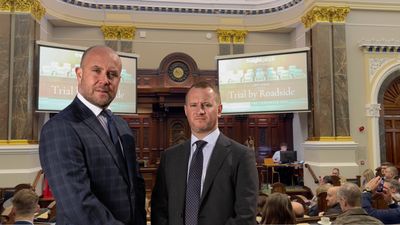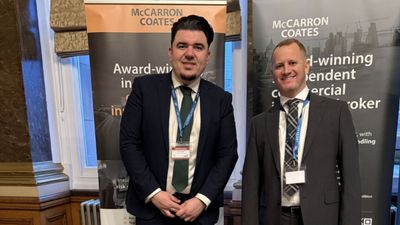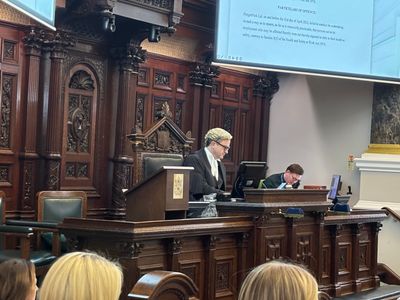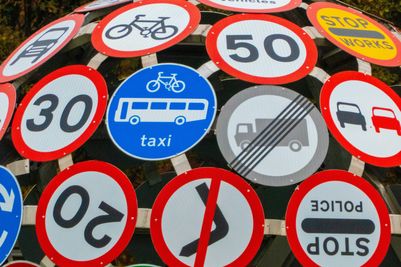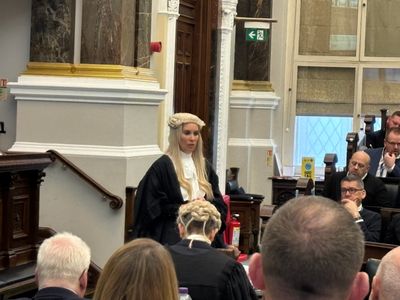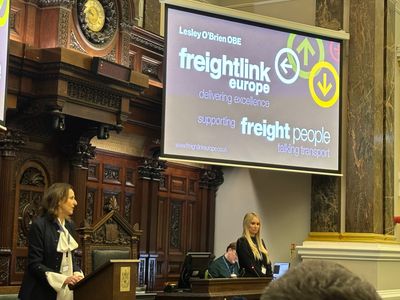Insurance Broker Says ‘Combat the Convergence’
Published:
Read Time: 4 mins
A convergence of highly addressable factors typically underpins the road traffic incidents resulting in the severest legal penalties says fleet insurance broker McCarron Coates.
This was demonstrated at a mock trial, sponsored by the broker and arranged, in Birmingham, by Freight People in partnership with LMP Legal. Whilst details of the people involved were changed, the case did actually occur, offering clear warning bells.
In this case, the convergence of factors were: fatigue; distraction; stress; poor maintenance; inadequate health and safety systems; presumptions; inadequate knowledge of current Highway Code rules and naivety about motoring prosecution police procedures.
A cyclist lost their life as a lorry turned left into a side road. The driver was suffering insufficient sleep and family stress. He took a hands-free call a minute before the impact. A camera that might have detected the cyclist failed due to an intermittent fault. The employer had not fixed the problem. They also had no written training procedures. The driver had seen the cyclist earlier but presumed they had stopped. He had not read a recent edition of the Highway Code and underappreciated Rule 140, with regard to cyclist priority.*
Whilst a pedestrian stopped at the side of the road, to be sure of the driver’s actions, the cyclist did not. With the driver looking in their right mirror, to perform a manoeuvre in which turning left required an initial swing to the right, they were unaware of the cyclist’s presence.
From there, naivety set in. The driver provided damning statements at the roadside that later counted against them and also refused legal representation when first interviewed. These factors, along with CCTV footage, led to conviction. Taking into account a previous endorsement-free driving record, they received a 12-month prison sentence and two-year driver disqualification. Their employer was given a £250,000 fine, payable within 28 days, under Section 2 & 3 of the Health and Safety at Work Act. All was exactly what happened in practice.
Interestingly, there was a split jury amongst mock trial attendees, with a 51% to 49% vote. Had the driver not given their damning statement at the scene, and had the benefit of instant legal advice, it is possible this mock trial jury might have found them not guilty.
McCarron Coates’ director, Ian McCarron, says: “This case featured common situations that lead a driver to be convicted of a dangerous driving offence through falling either far below the standard expected of a competent driver, or below it.
“The law punishes commercial drivers heavily because of their place in the ‘hierarchy of road users’. Many times, there could mitigating circumstances but, if a driver incriminates themself, when in shock and not thinking clearly, mitigation is difficult. Drivers often do not realise that what they say at the roadside can be taken as evidence and used against them.”
McCarron Coates advises drivers and operators to closely monitor situations like fatigue, stress and mental health and not drive tired, or at a time when driving performance could be adversely affected. Keeping maintenance and roadworthiness top of mind is essential and faults should be fixed immediately, regardless of that incurring downtime.
Employers should keep a strong audit trail of training, to have the evidence that they have done all in their power to keep their employees and the public safe. They should also have written policies in place, rather than verbal. Ideally, all would be contained within an employee handbook, reinforced by regular refresher training sessions.
It is also wise risk management to have a means for drivers to immediately access transport-specific legal support, in police-attended incidents. McCarron Coates remains the only broker to provide this to clients, as part of their insurance.
“A disastrous convergence of factors is only a couple of slips in procedures or lapses in driving performance away, for many fleets,” says Ian McCarron. “Fleet managers should take this on board and address weaknesses immediately.”
More about McCarron Coates can be found at www.mccarroncoates.com
Notes to Editors
* Rule 140 of the Highway Code states, “You should give way to any cyclists in a cycle lane, including when they are approaching from behind you – do not cut across them when you are turning or when you are changing lane. Be prepared to stop and wait for a safe gap in the flow of cyclists before crossing the cycle lane. You should give way to cyclists approaching or using the cycle track when you are turning into or out of a junction (see Rule H3). Be prepared to stop and wait for a safe gap in the flow of cyclists before crossing the cycle track, which may be used by cyclists travelling in both directions. Bear in mind that cyclists are not obliged to use cycle lanes or cycle tracks.”
Rule H3 says: “You should not cut across cyclists, horse riders or horse drawn vehicles going ahead when you are turning into or out of a junction or changing direction or lane, just as you would not turn across the path of another motor vehicle. This applies whether they are using a cycle lane, a cycle track, or riding ahead on the road and you should give way to them.
Do not turn at a junction if to do so would cause the cyclist, horse rider or horse drawn vehicle going straight ahead to stop or swerve.
You should stop and wait for a safe gap in the flow of cyclists if necessary. This includes when cyclists are:
· approaching, passing or moving off from a junction
· moving past or waiting alongside stationary or slow-moving traffic
· travelling around a roundabout
Ends
Editors notes
McCarron Coates is an award-winning insurance broker, based in Morley, Leeds, which is a specialist in fleet transport insurance and other niche areas such as roofing, scaffolding and woodworking insurance. It also supplies many other types of commercial insurance policies and risk management services, to clients nationwide and is highly respected as an industry thought-leader, within its individual spheres of influence.
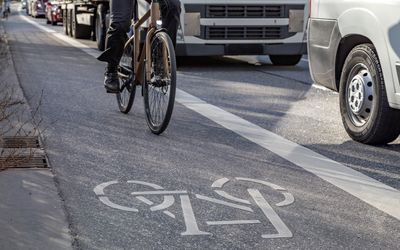
Cycle and lorry on busy route through an urban centre.
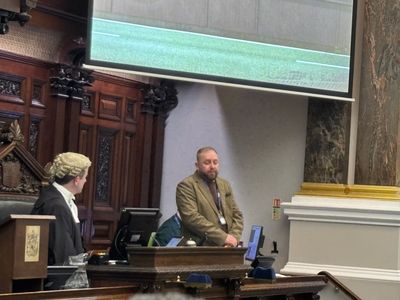
Defendant driver in the dock at the 2025 mock trial arranged by Freight People, for which McCarron Coates was the headline sponsor
